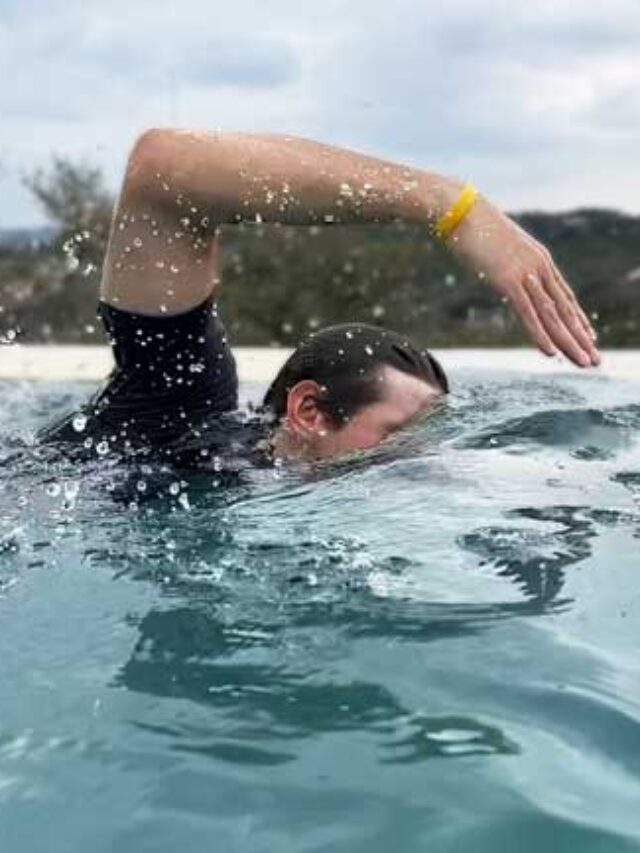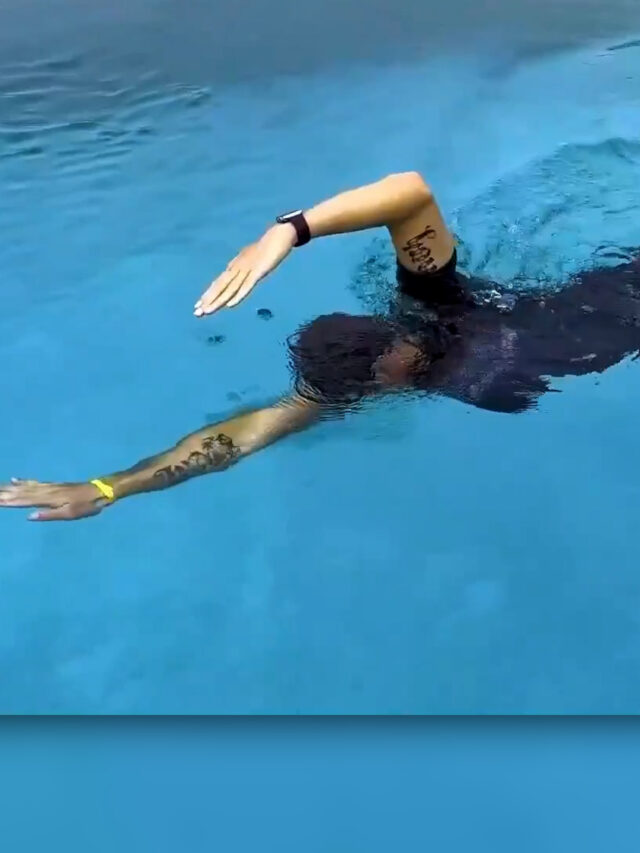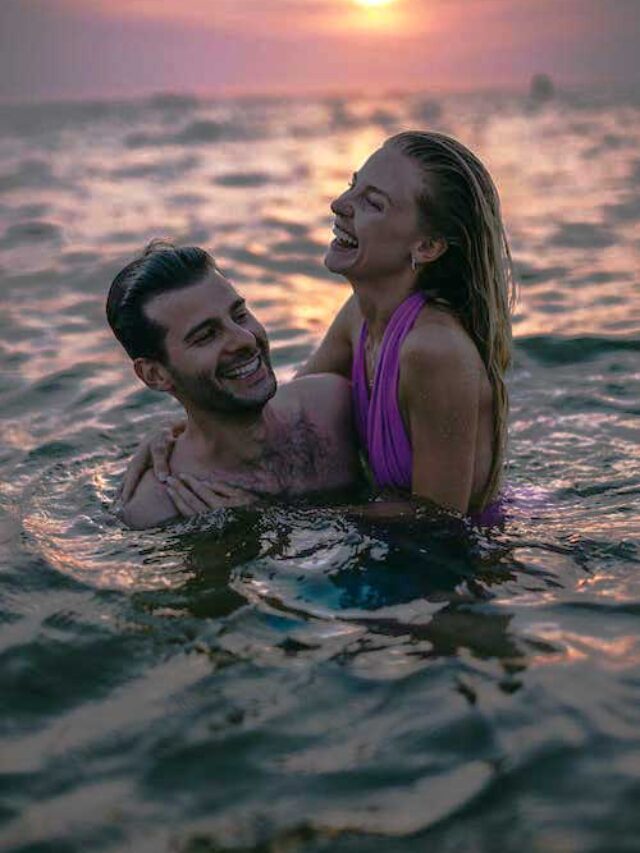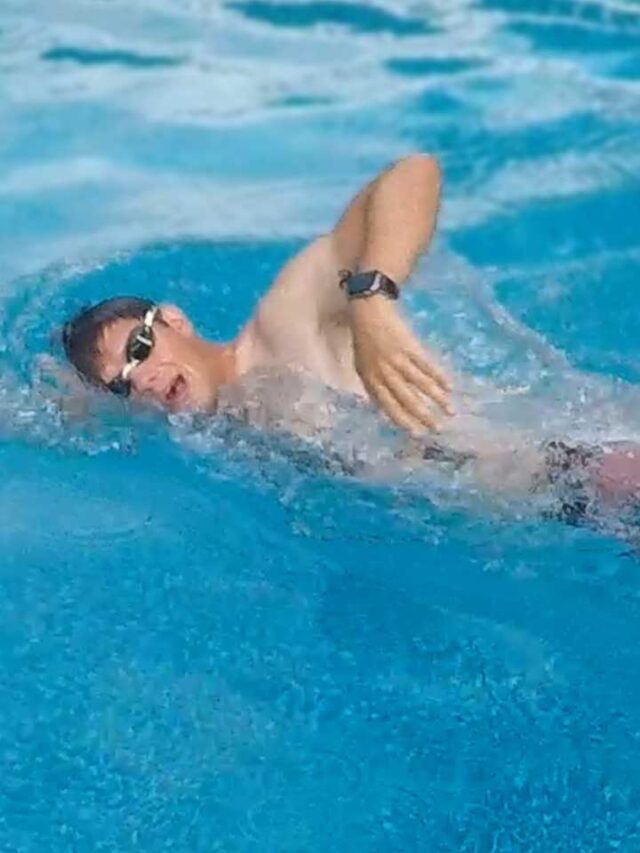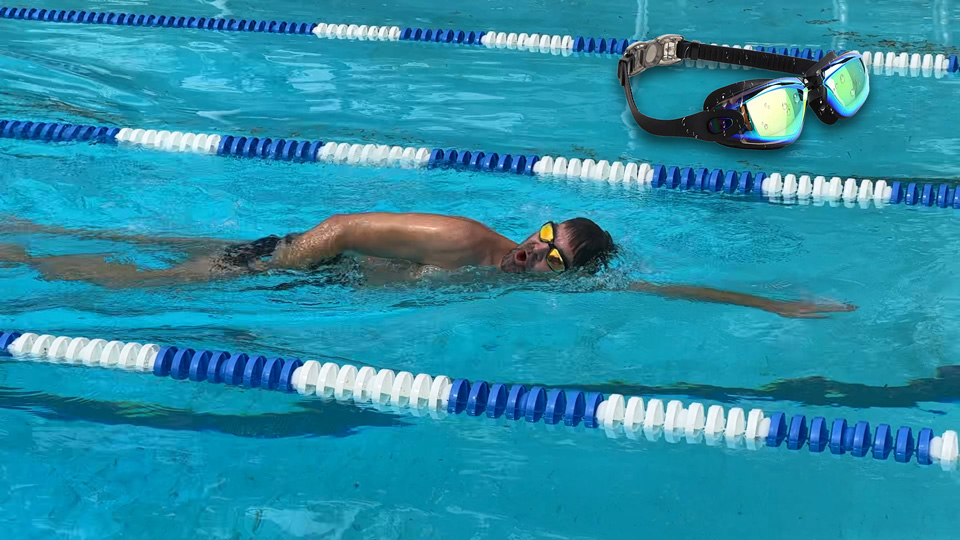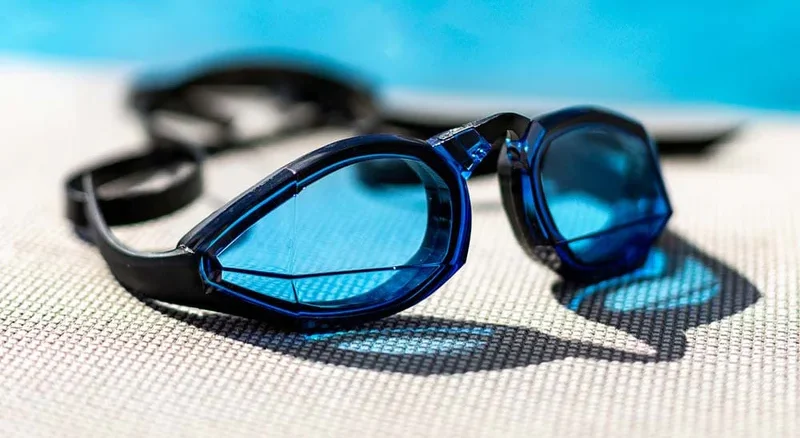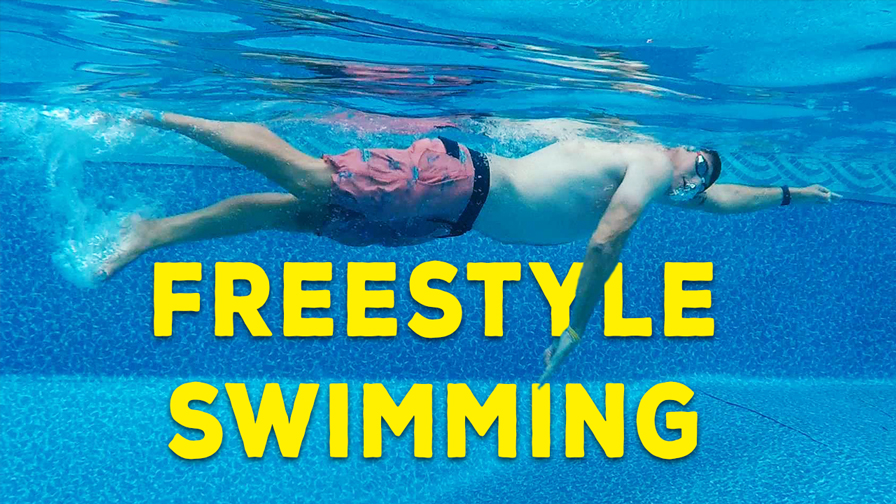
Freestyle Swimming is the most efficient way to swim in the water. It’s the most common way and it’s the fastest way it’s often used for training for longer distances by triathletes, long-distance swimmers, and even the average lap swimmer.
If you watch the Olympics, you’ll notice that the freestyle swimming times are always the fastest times of any of the four strokes.
In this blog, you will learn everything about Freestyle Swimming stroke. Being able to swim freestyle stroke is an essential skill for all levels of swimmers.
What is Freestyle Swimming Stroke?
Freestyle stroke originated as the Australian crawl. It was invented in Australia as a more efficient way to swim than breaststroke. Eventually, it changed into the front crawl and now we call it freestyle.
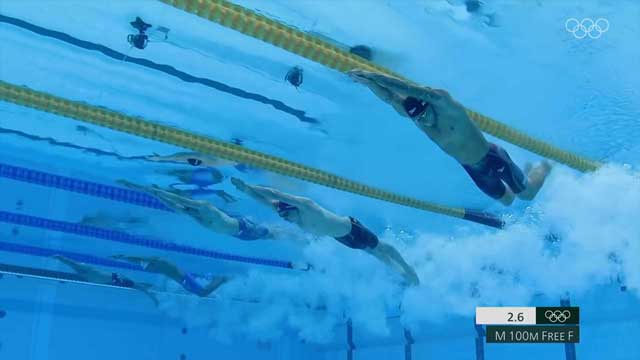
Technically in a freestyle swimming event, you’re allowed to dive in and swim any stroke you want. If you’re doing freestyle, then it has to remain the same stroke throughout the race. So if you dove in and swam butterfly in a 100-Freestyle, then you’d have to keep swimming butterfly for the whole race.
That’s why it’s called freestyle as it gives you the freedom to swim any stroke you want as long as you stay strong on the same stroke for the entire race.
The 3 Components of Freestyle Stroke
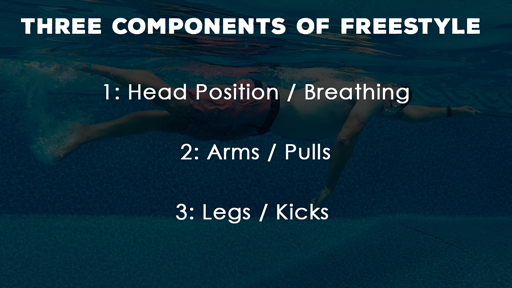
Freestyle stroke has 3 components to it.
Head Position – Freestyle Breathing Technique
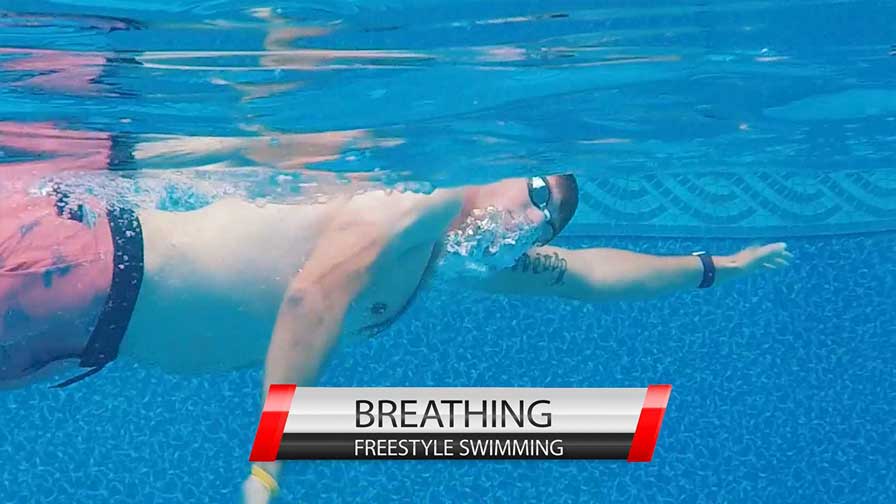
- Breathe on your side
When you breathe in freestyle, it’s the only stroke where you breathe to the side instead of in front of you. You breathe in front of you when you swim butterfly or breaststroke.
Breathing on your side is the most efficient way to take your breath when swimming freestyle. Because when you breathe to your side, your body can stay in line with itself. This position is also more hydrodynamic as opposed to butterfly or breaststroke.
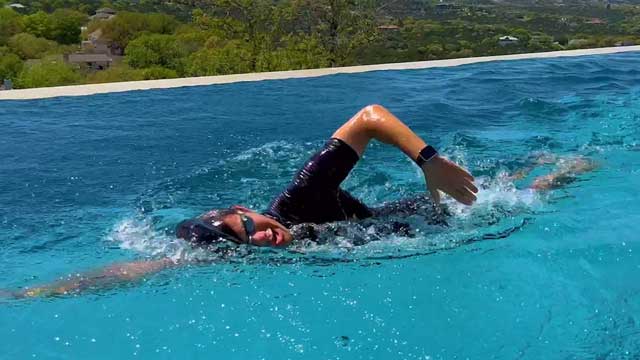
When breathing in freestyle we recommend you to breathe to the side and slightly behind you. Too many swimmers breathe on their side but in front of them or they lift their heads too high. Your ear should always stay below the surface of the water.
When swimmers breathe in front of them their bodyline dips and they have a hard time getting started again. Breathing in front of you will also create more resistance which slows you down in the water.
- Your breath starts when you start your pull
Start your breath when you start your pull. Pretend like your hand and your nose are connected by a string. When the pull starts, the breath starts so you complete your breath by the time your arm comes down. Don’t lift your head and your hand out of the water at the same time!
- Exhale completely before you turn to your side
It is recommended to blow out all the air before you turn to the side to breathe. It can be a steady bubble stream or it can be the one final burst where you let out all the air at once. If you blow out all the air before you turn to your side then all you have to do is inhale and put your head down as quickly as possible. It cuts the breath time in half!
- Breathe every 2 strokes
We recommend you breathe every 2 strokes. You need more oxygen in your muscles to swim faster for longer distances. You will feel the burning sensation & exhaustion if your muscles don’t get enough oxygen. A lot of beginners get exhausted after swimming only one length of a pool because they hold their breath for too long.

You don’t hold your breath when you ride a bicycle, work out in the gym, jog, or do many other activities in day-to-day life. Consider swimming as a normal activity and breathe as much as you can with proper technique. So breathe every 2 strokes to swim efficiently.
Arms – Freestyle Pull Technique
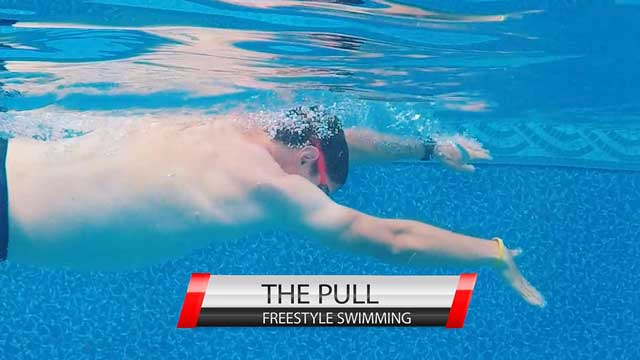
- Swim like a superhero
The pull is the second component of the freestyle stroke. When you swim freestyle, think of yourself as a superhero. You want both hands in front just like superman.
Your one hand will stay in the same position as your other hand completes the pull and vice versa.
- Front quadrant swimming
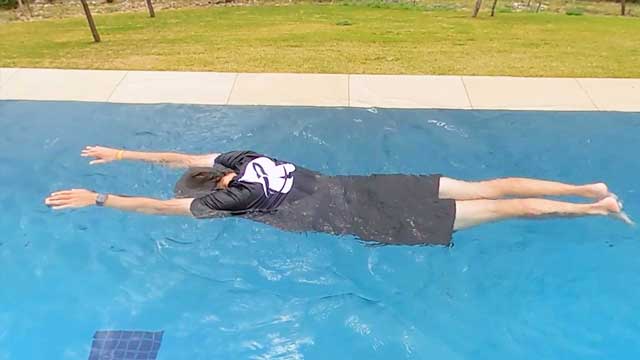
Front quadrant swimming is the key to keeping your body balanced when swimming freestyle. You should keep your hands out in front of you to keep balance in the water. Think as if you are floating on your belly. Naturally, you will always stretch your arms to your forward when dipping down in the water. It’s an instinct.
- Each pull should have a High Elbow Catch or early verticle forearms
When you start your pull, your elbow should remain high. This is a more effective catch. Get your fingertips underneath your elbow to perform an effective high elbow catch. This will improve your speed as you catch more water to push yourself forwards.
- Hand recovery should be graceful
Your hand should gracefully move forward in the starting position. Recover should be performed quickly but not abruptly. Don’t let the water splash in front of you. Just rest your hands forward gently to complete the rotation.
- Keep your palms flexed when they are at the back of your body
Keep your palms flexed when your hand is underwater and almost at the back of your pull. You are always swimming at the direction of the back of your palm.
Legs – Freestyle Kicks Technique
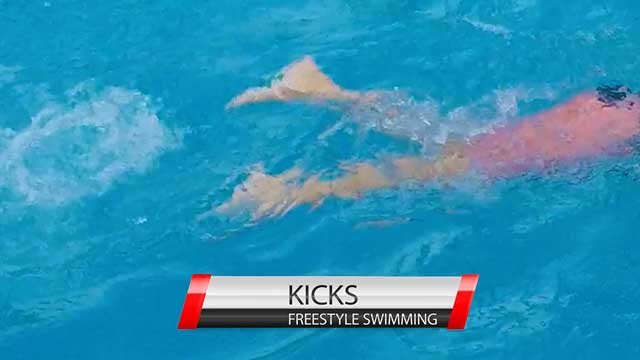
The kick is the third and last component of freestyle swimming. In Freestyle swimming, the kick is a little bit of a big flutter kick than what you do on backstroke. The bigger kick gives you more control and momentum to push you through the water.
- Don’t bend your knees too much
Most beginners kick their legs too straight or they bend their knees too much! Neither of those should be performed when swimming freestyle.
You want your feet to just drift behind you. Don’t bend your knees too much or kick too hard. A little bit of fluttering action is what you should aim to swim efficiently without getting exhausted. Think of it as a jellyfish movement.
- Keep kicking while taking your breath!
One of the most common mistakes beginners do is they stop kicking as soon as they are taking their breath. This slows them down and their lower body starts sinking.
Make sure you kick through the breath! Because when you turn your head to your side for breath, your body is going out of balance just a little bit so the stronger kick will allow you to maintain your balance and keep your body moving through the water. Keep kicking to keep you up!
That’s all we have for Freestyle swimming in this blog! Don’t forget to check out the video below to learn more about Freestyle Swimming.
Happy swimming 🙂
If you’re looking for more tips on how to improve your swimming, check out our other blog post on the subject listed below. Thanks for reading! 🙂 Don’t forget to subscribe our RocketSwimming YouTube channelso you never miss a new video or training tip! We publish new content every week!
Check out our other posts
How To Swim Breaststroke Effectively


